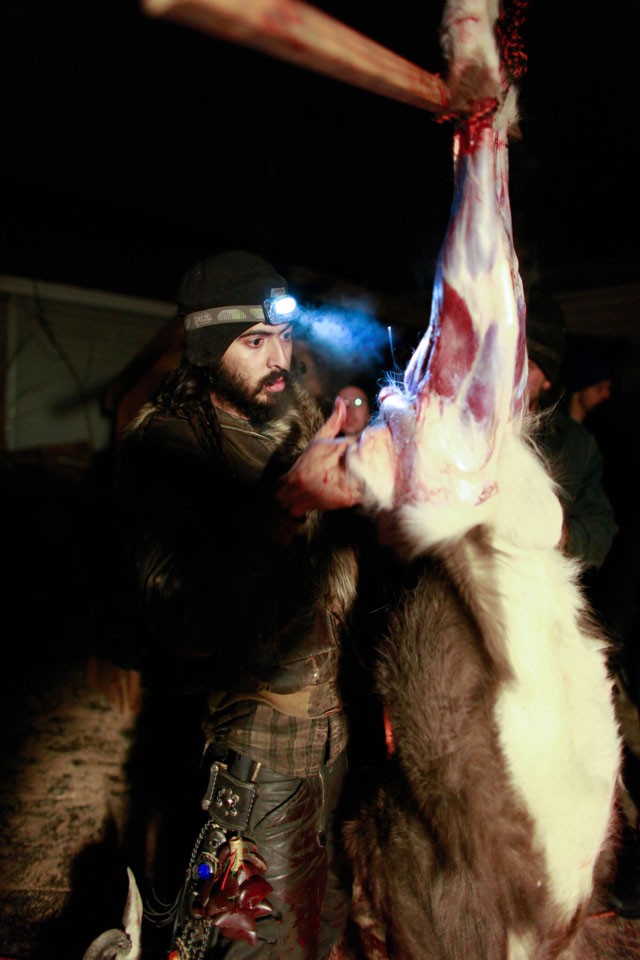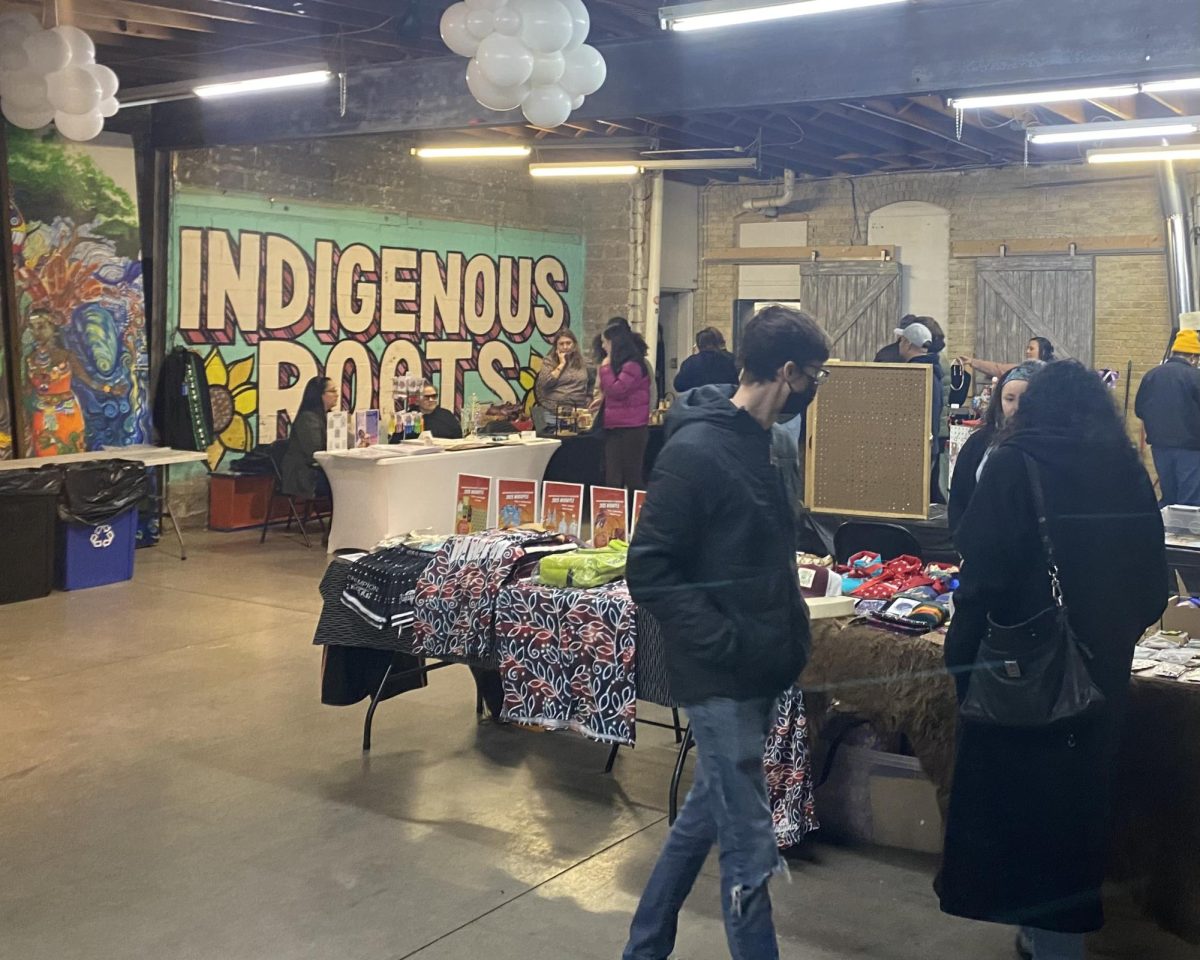WHAT: Full Moon Puppet Show
WHERE: SisterâÄôs Camelot
(warehouse space)
WHEN:Fri., March 18, 7:00-9:00 p.m. snacks, 9:00-10:30 p.m. show
COST: Donation
Come every full moon, youâÄôll find Liz Schachterle howling in the dark air of the evening.
SheâÄôs not alone in this monthly ritual. There is, in fact, a band of devoted followers and curious newcomers who hear of an evening dedicated to experimental puppetry performance that occurs at the beginning of every lunar cycle. This event, which appears like clockwork only once a month, goes by the name of âÄúFull Moon Puppet Show,âÄù and has been a reliable Minneapolis entertainment mainstay since summer 2008.
âÄúEvery full moon, weâÄôre going to create a show and no matter what happens, on that full moon, weâÄôll present something,âÄù Schachterle said.
Schachterle, creator and host of âÄúFull Moon Puppet Show,âÄù is herself a puppeteer and initially created the event as a simple personal goal to create something on a monthly basis, selecting the full moon as her deadline. Over time, the show evolved into a popular social event where both established and novice puppeteers showcase their often playful and occasionally absurd material.
Though the show is rooted in a single discipline, it manages to stray far from the monotonous.
âÄúFull MoonâÄù has played host to acts with shadow puppets, mask-wearers, marionettes, light projections, finger puppets, and of course the old standby âÄî the sock puppet.
âÄúYouâÄôre making the puppets, youâÄôre creating the masks,âÄù event organizer Rachel Leaf said. âÄúWith puppets, you can really create your own world. You can create this whole other existence.âÄù
The description might sound more like a mission statement for the creation of an internet avatar, but the result is infinitely more engaging, entertaining and sometimes even impressive.
After the closing of the Bedlam Theatre last September, âÄúFull Moon Puppet ShowâÄù has been a nomadic event that since has taken place in the old Arise! collective bookstore space, SisterâÄôs Camelot and outside.
Last full moon, Schachterle and Leaf greeted their audience from atop a stage made entirely out of packed snow. Standing before a crowd that had braved the bitter Feb. 19 evening air to come see the uncharacteristically outdoor show, they began the set with a ceremonial group howl and, as the eveningâÄôs hosts, kept a general jovial swagger. âÄúHeckle as much as possible,âÄù Leaf demanded.
This unique request might intimidate artists looking to debut their material, but it in fact contributed to an atmosphere that, for a theater-based event, is surprisingly social and actively engaged with the material on stage.
âÄúWeâÄôre all participants. It feels very bottom-up âĦ WeâÄôre agents in our own creativity,âÄù first-time performer Vince Coloura said.
He echoed this sentiment in his piece, which itself offered some humorous self-reflexive commentary on stratification in youth culture. As one of his overhead projector comic characters reflected, to big laughs in the audience, âÄúI think thatâÄôs a serious issue, you know, segregation between various cliques of the bohemian lifestyle.âÄù
Coloura touched on a sentiment shared by Leaf and Schachterle. âÄúWeâÄôre all about audience participation.âÄù
Noah Sommers Haas confirms this enthusiasm with his own experience as a longtime spectator and performer.
âÄúYouâÄôre encouraged to put your two cents in if youâÄôre in the audience âĦ They donâÄôt take it as an insult. And thatâÄôs why every show expands, and the artist doesnâÄôt know whatâÄôs going to happen,âÄù he said.
In terms of unexpected events, the main attraction of the evening was the ceremonious on-site slaughter and subsequent roasting of a goat âÄî a one-time happening that Schachterle and Leaf consented to but did not organize, and was an anomaly in the showâÄôs history, Leaf noted. As people gathered around the makeshift barbecue pit and tore pieces off the roasted goat carcass with their bare hands, segments of the crowd got bestial, and the whole event added a post-apocalyptic flair to the evening.
Fortunately, per tradition, âÄúFull Moon Puppet ShowâÄù supplies complimentary beverages and food, all a benefit of SchachterleâÄôs strict policy of making everything by donation.
âÄúYou decide if you want to pay for it because this art is not about being well-practiced. ItâÄôs not about being really professional. ItâÄôs about experimentation.âÄù Schachterle said.
The openness to experimentation opens a mixed bag of artistic styles in the puppetry showcase. On one end of the spectrum was a wacky and informal sock-puppet routine performed by Schachterle herself, which successfully elicited shouts, whoops and roars from the rowdy audience.
On the other end, the most polished performance was a troupe of young women who, after unloading a collection of marionettes from an antique chest-cum-backdrop, proceeded to sing a melancholic tune while narrating a tale with their puppets crafted out of repurposed doll parts and animal skeletons.
Their miniature musical theater piece was a compelling work that put the beauty of animating the inanimate on full display, albeit with a little seriousness.
Despite the reliability of their monthly performances, Schachterle is adamant about not getting rooted in a specific space and alludes to the possibility of being indefinitely nomadic. âÄúItâÄôs fun to create something just to have for this evening,âÄù Leaf said.
âÄúFull Moon Puppet ShowâÄù is about as relaxed a theater event as they come. The pretext to create objects has more playful and amusing results than might a conventional open-mic night, though at times the acts can get just as rough. However, there are always the few requisite gems, and Schachterle is adamant about experimentation, whatever the outcome.
“Try it. Try it on a stage made of snow. Try it with a mask on. Try it behind a screen with a shadow projector. Try it with a drum in your hand … Just try it,” Schachterle said.














